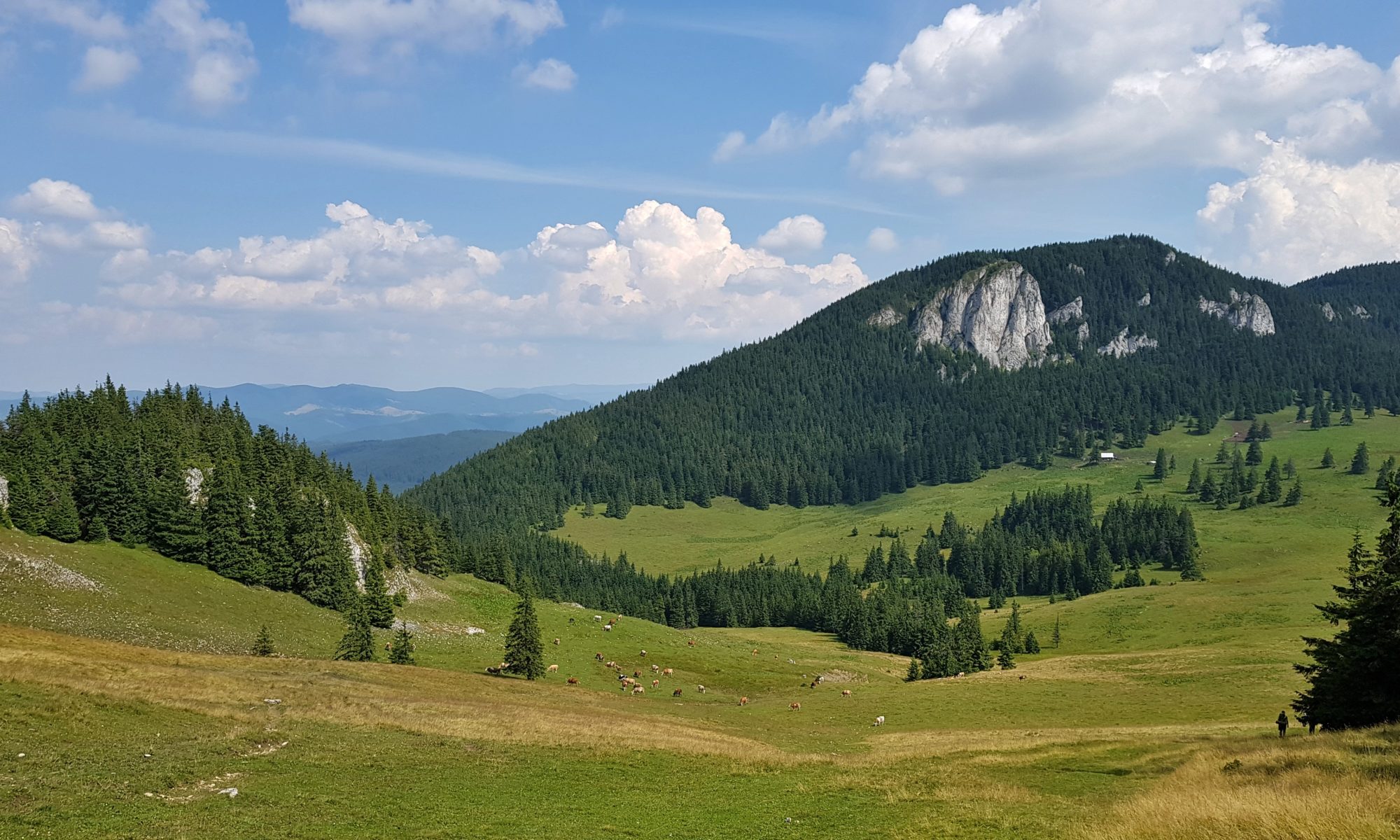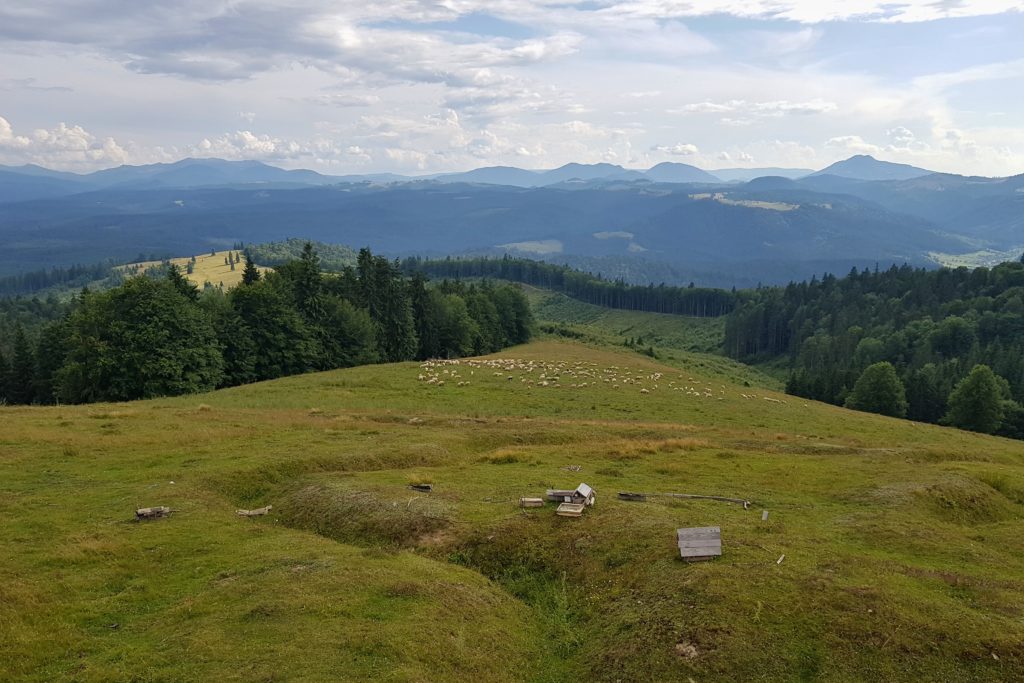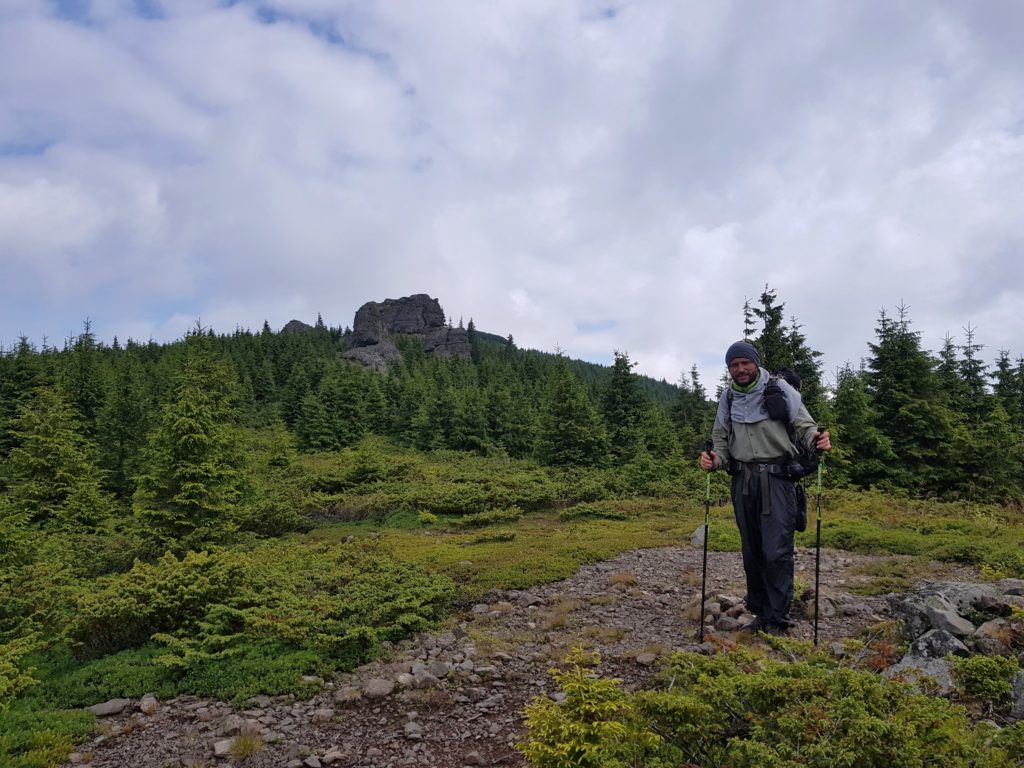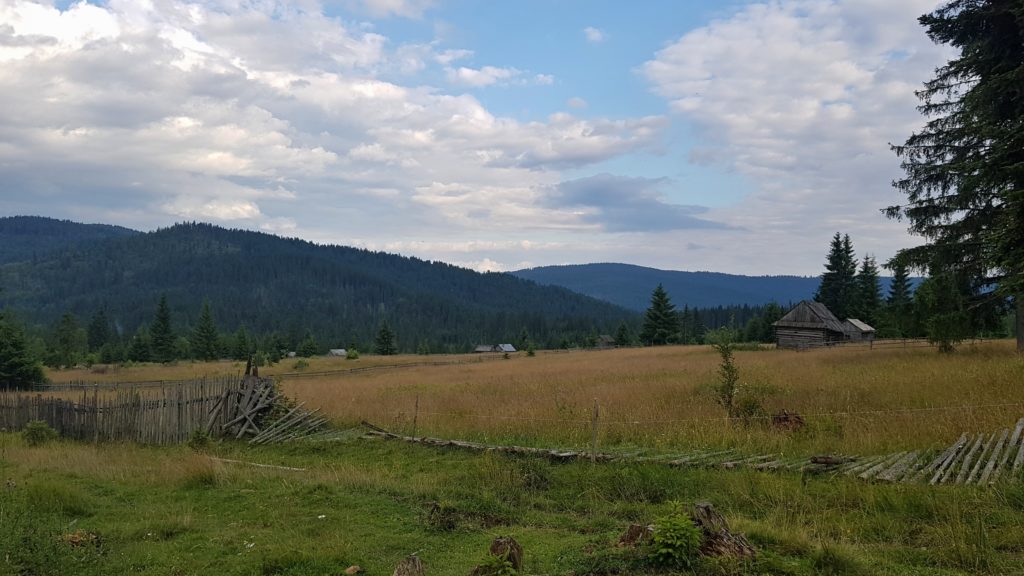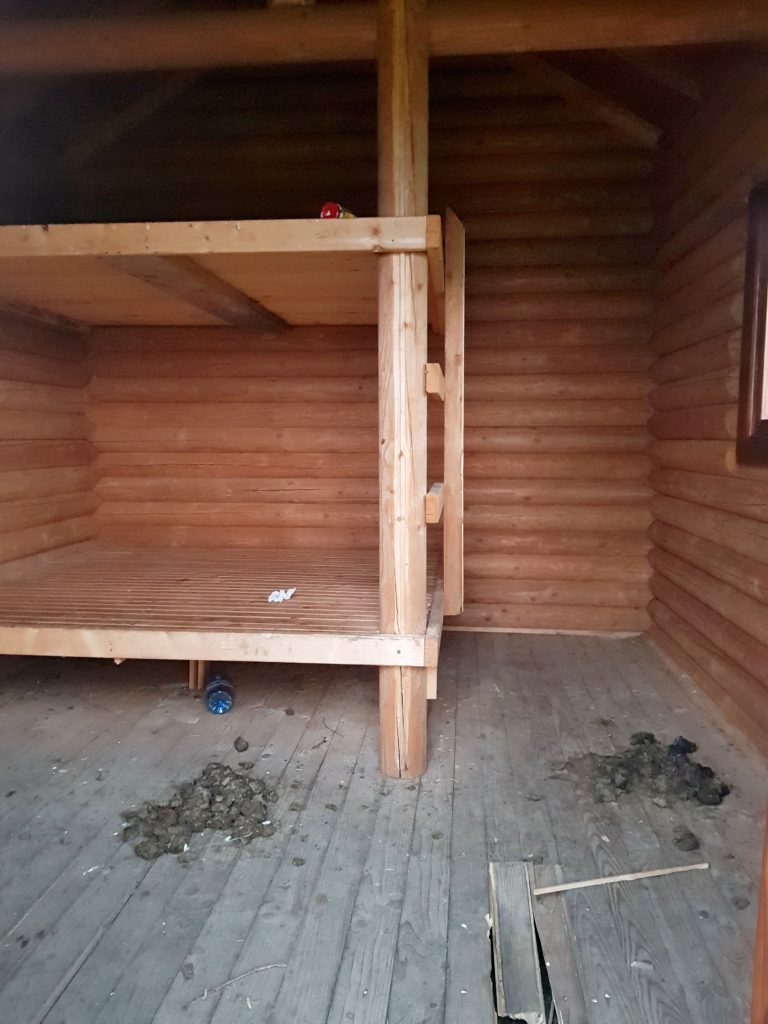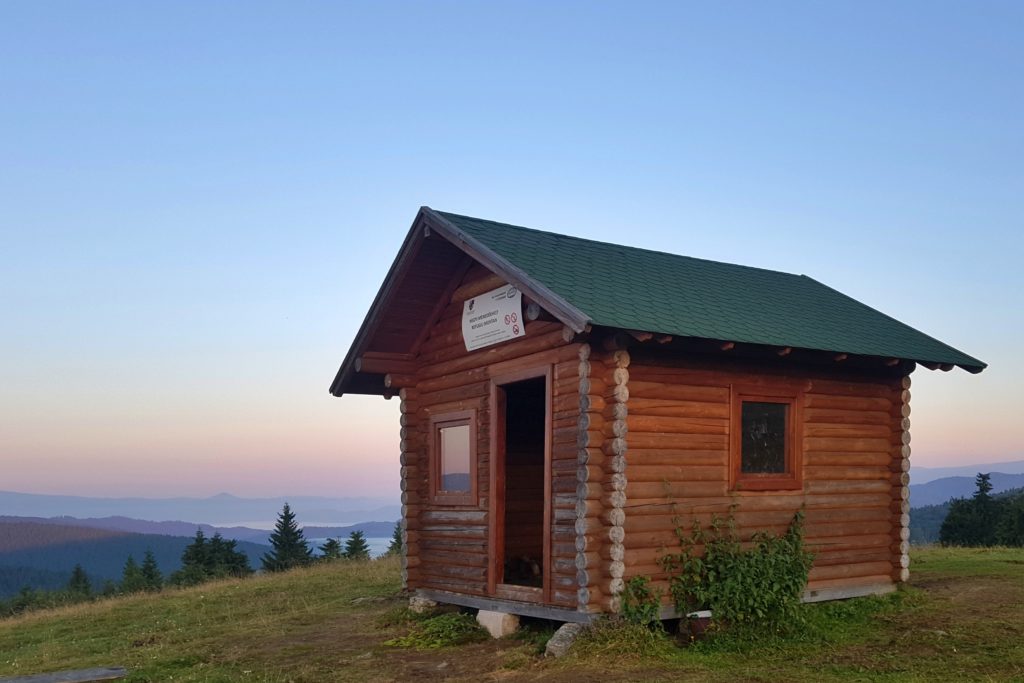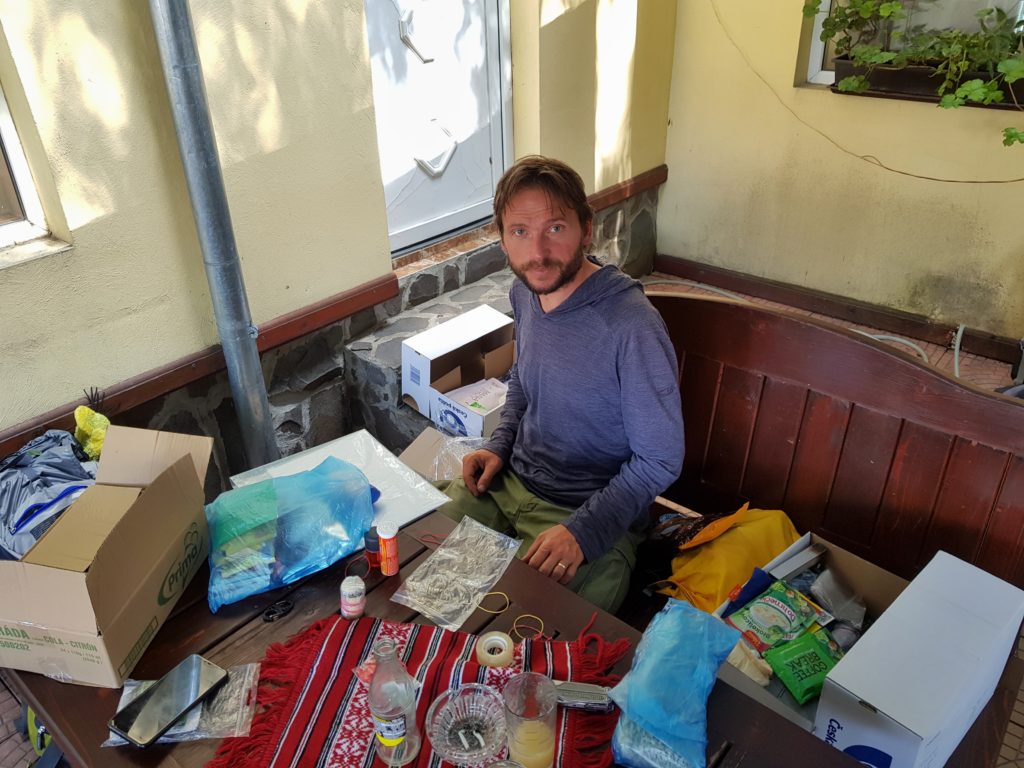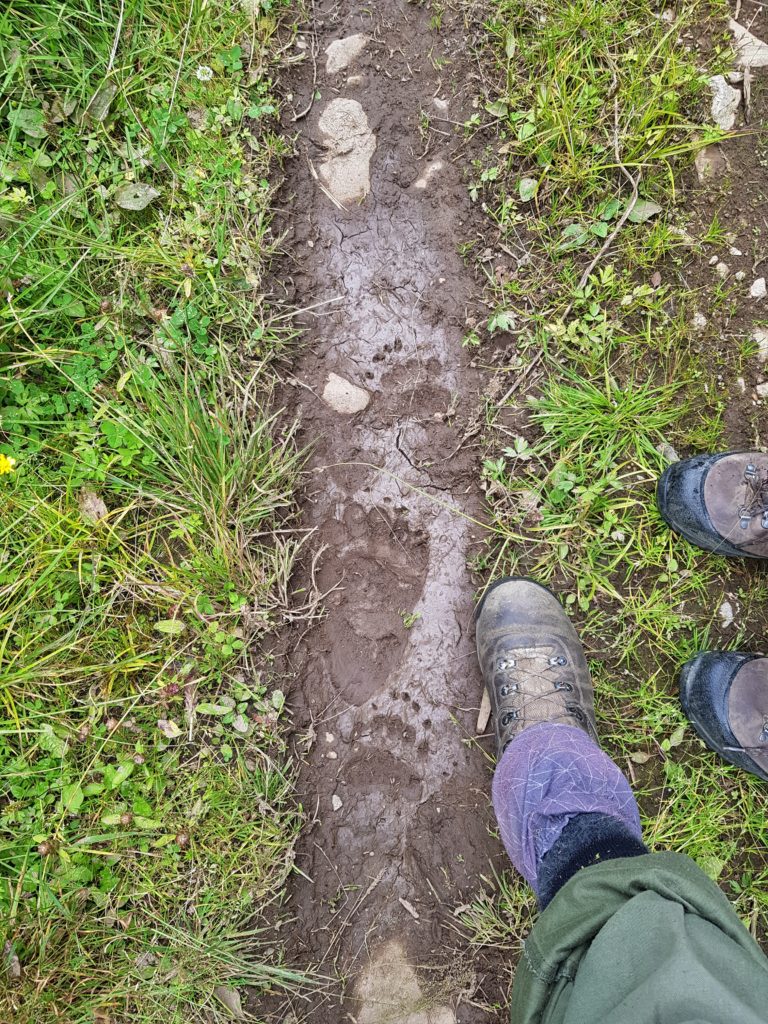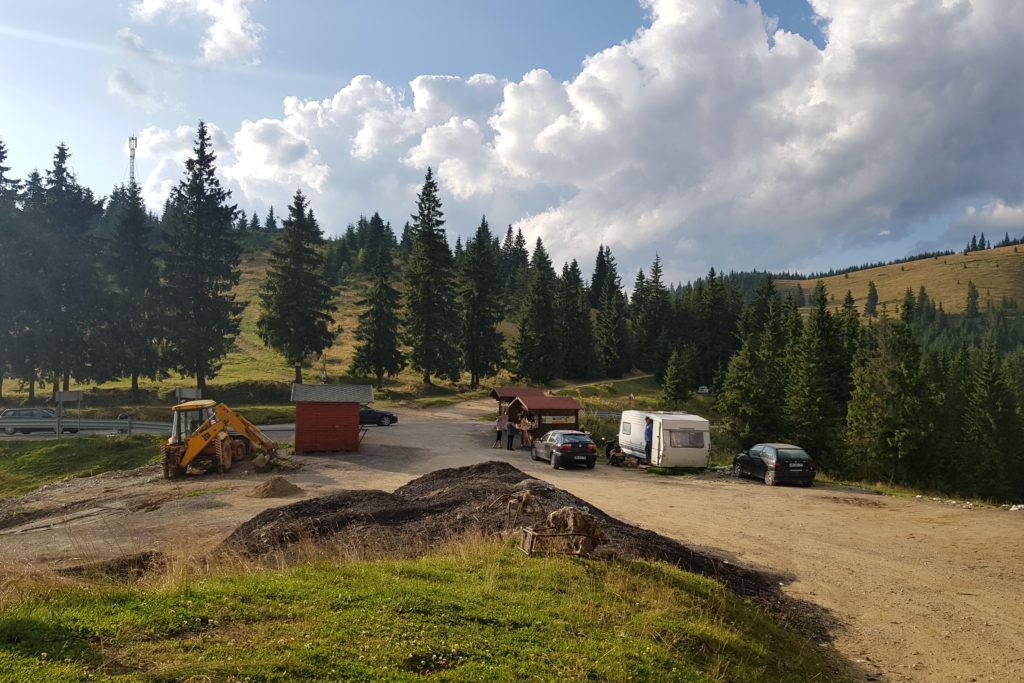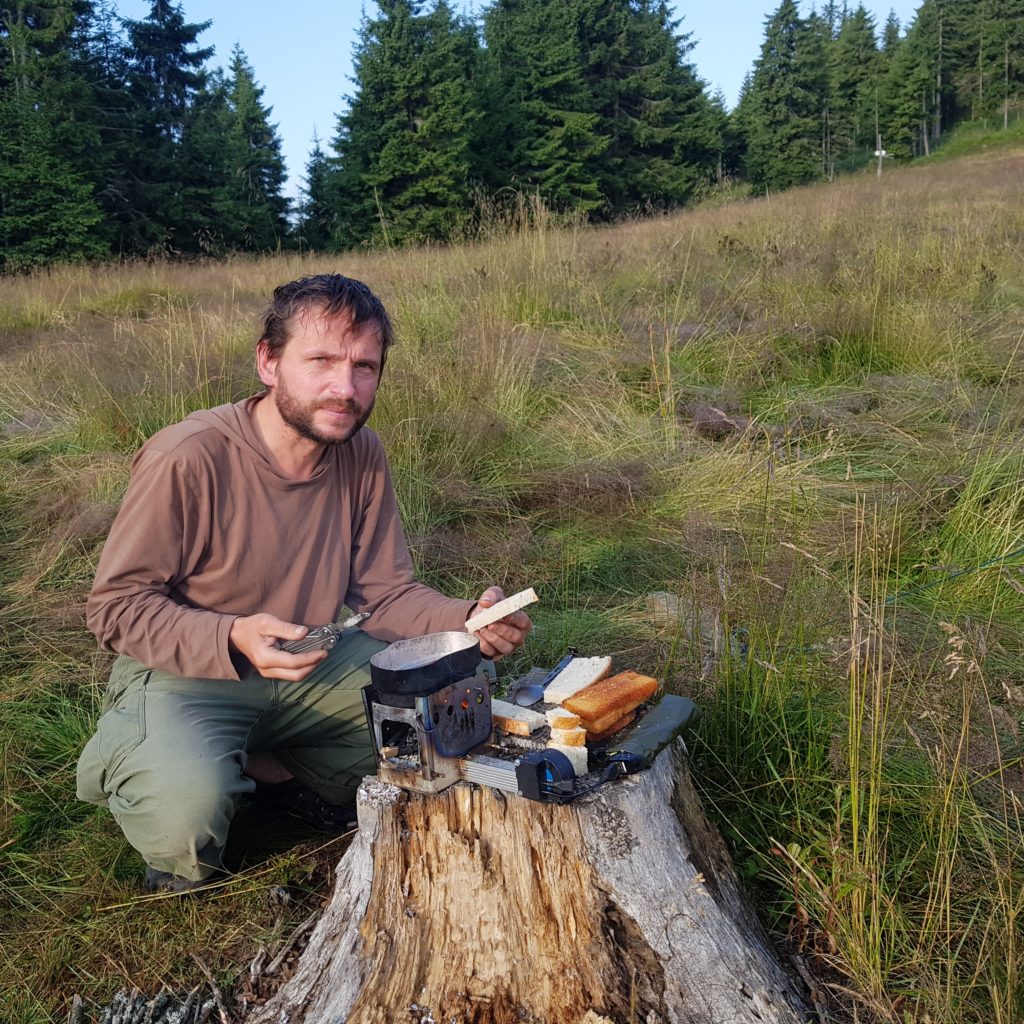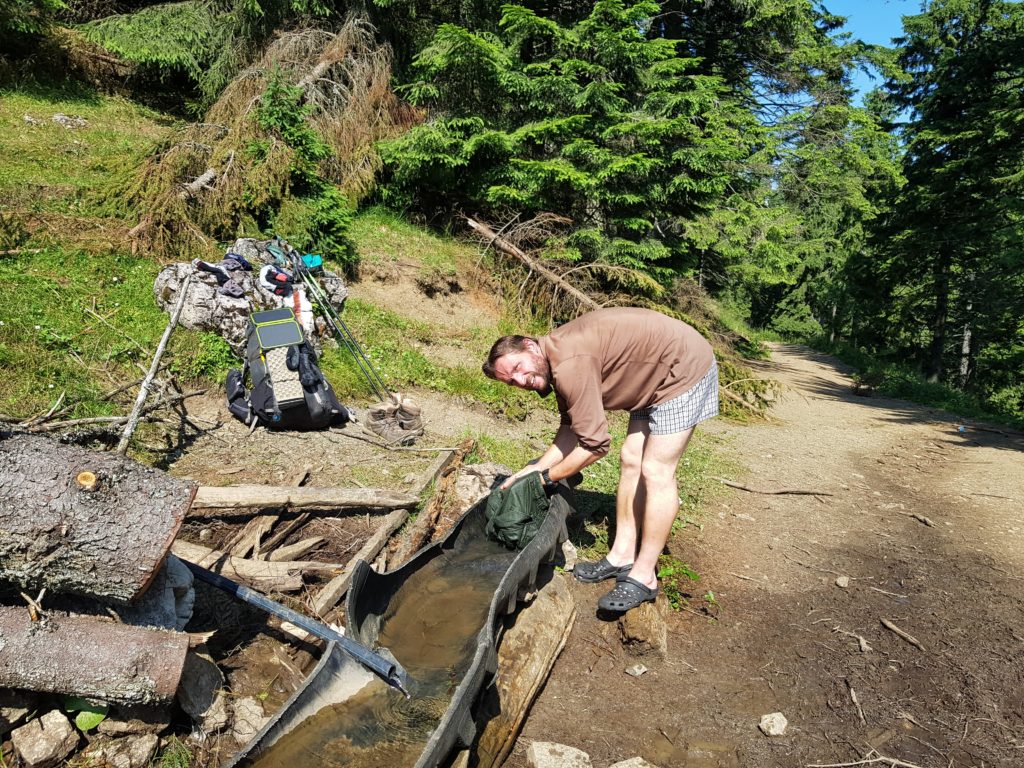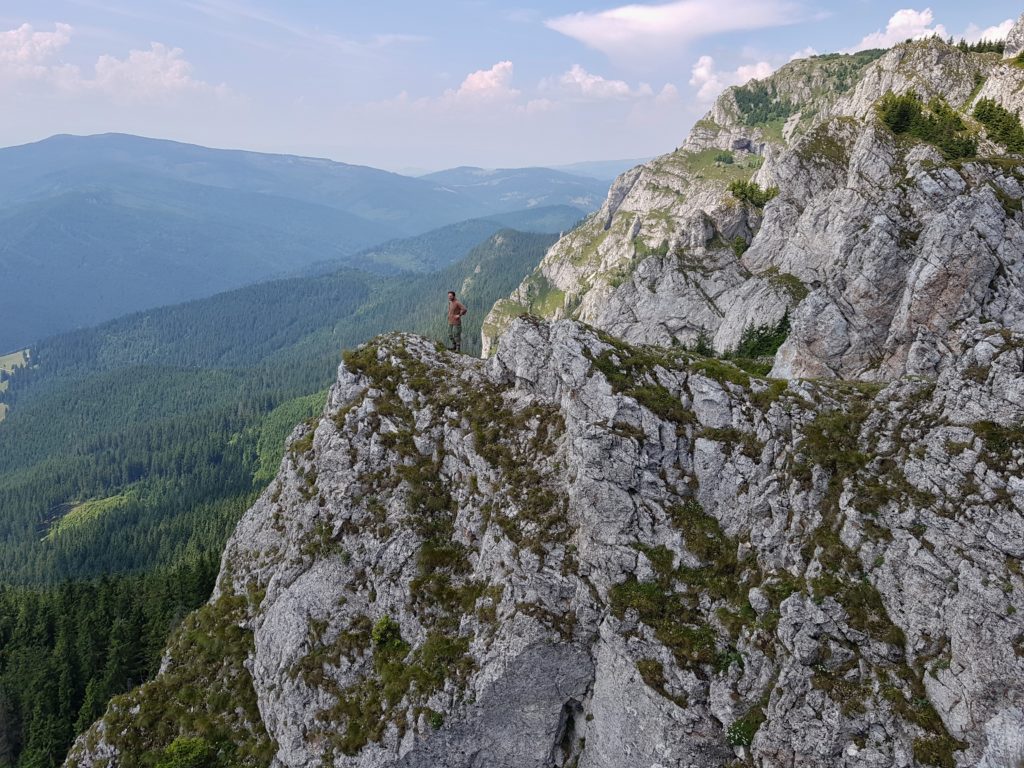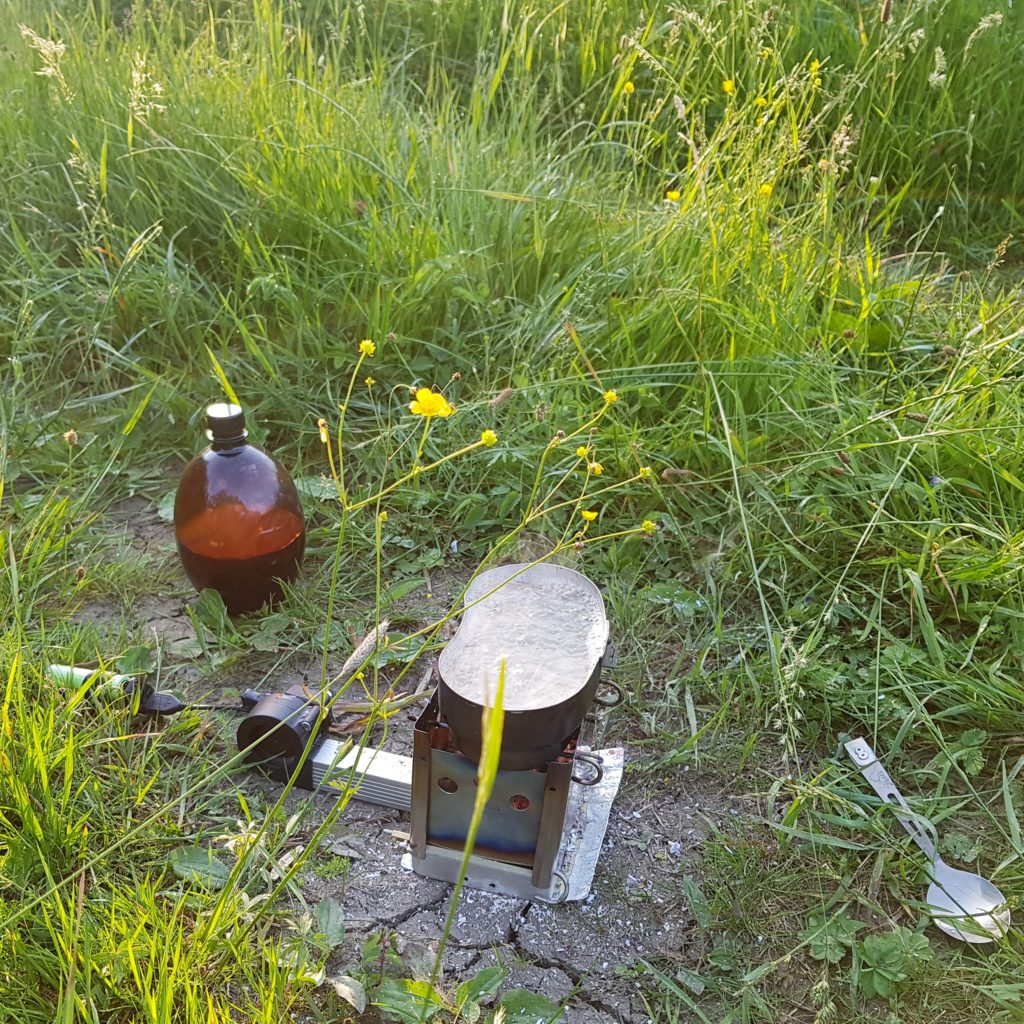Through pastures
On Monday 22nd July we woke up to the rain that ceased at about the time we packed our stuff. We continued through Suhard and Munții Bârgău towards the Călimani volcano caldera.
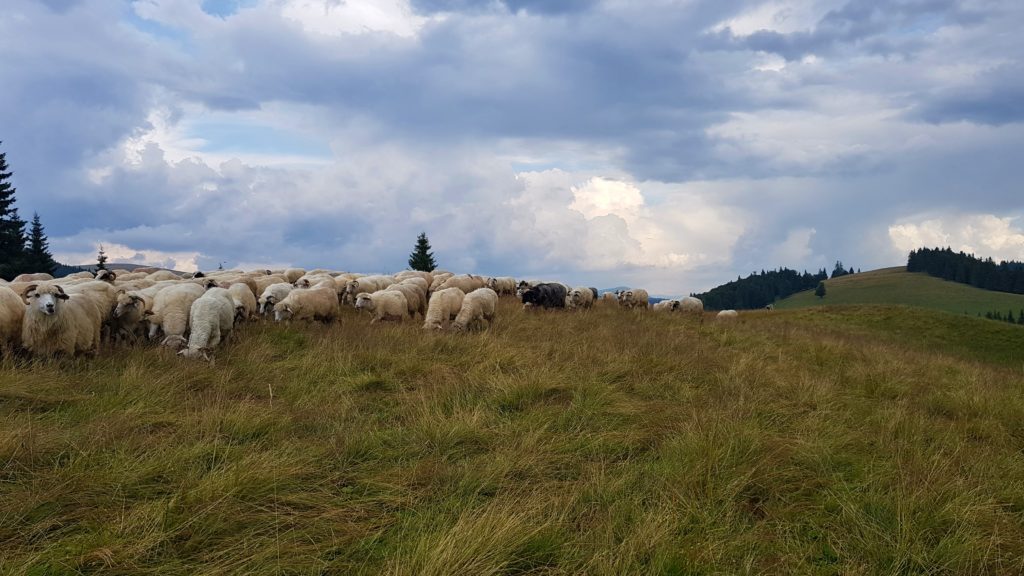
Many meadows were grazed and we were impressed by many nice newly built kolibas (shepherds’ houses), though we passed by simple ones too. Parts of our route went through forest, which was at some places difficult to cross due to uprooted trees.
In the afternoon we met a shepherd with his 14 years old son who made small 3D model of a koliba out of sticks and stones on the remains of WW II trenches.
This kind of moved me. I gave him my slingshot as I found it was not effective against dogs – they were not scared by it as they had never seen any before. From that point we could see both Călimani and my favourite mountains – Ceahlău with its crown-shaped peak Toaca (1901).
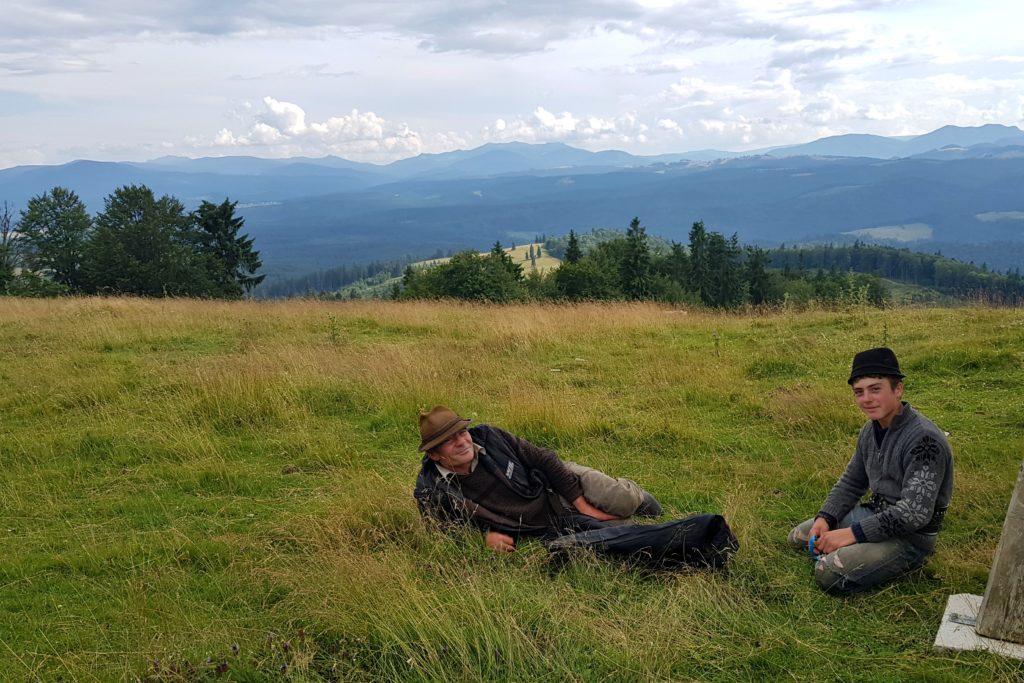
At about 6 pm the sky turned black behind us and we were wondering if the thunderstorm reaches us or not. Fortunately, we were touched by its edge only and rewarded by a beautiful rainbow just when we reached some “Via Transilvanica” trail. It was difficult to find a place to sleep and we ended up in a wet and not particularly nice forest near Tătaru village.

Stranded twice in the rain
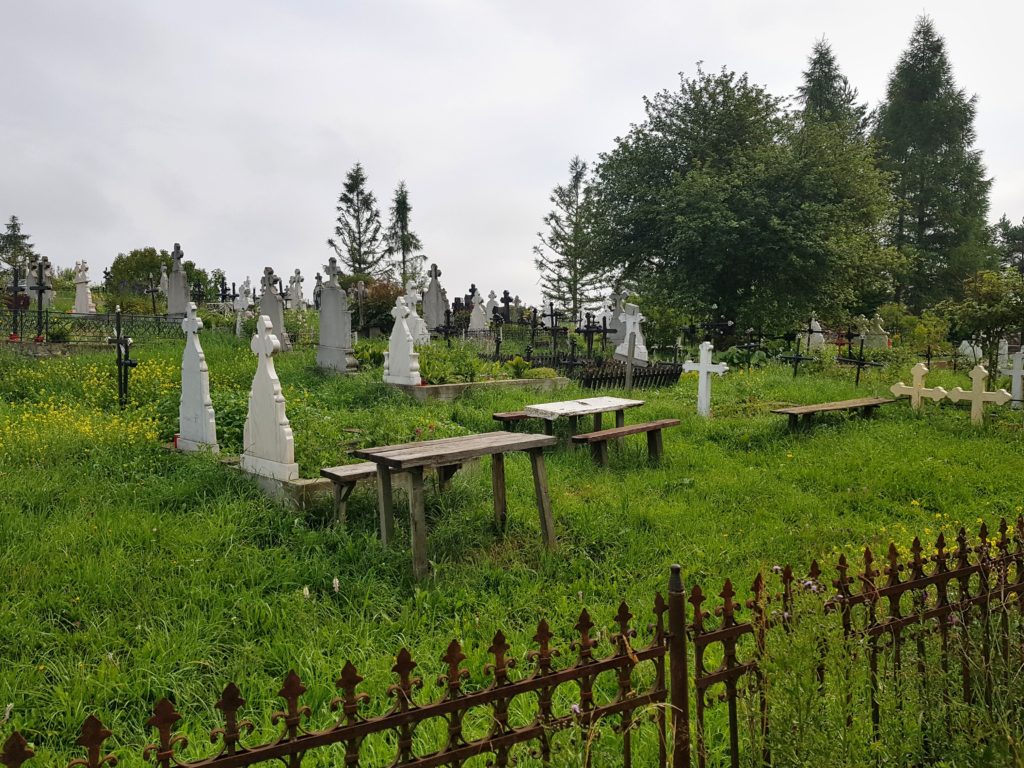
We had our breakfast at a shop in Poiana Stampei on Tuesday 23rd July. I really like the fact small village shops have bars nearby so that people can consume what they bought. In this case we could comfortably recharge our electronics. Unfortunately the sardines in oil burst after opening leading to large stains on my trousers and merino shirt. Small accident in everyday life but big trouble when you cannot make laundry due to wet weather and you walk through a bear country.
While ordering cappuccino we learned that in Romania they make it simply way – take an instant package, pour hot water over it and give you piece of plastic to stir it. They even have special stands for them so you can choose one of the artificial flavors. It costs 40 cents but is far away from the real drink. However, locals do not mind unless they know the difference.
Few kilometers after leaving Poiana Stampei it started raining. Fortunately we were walking on a wide forest road, unfortunately we took a wrong one at a crossroad and then got wet, boots fully soaked while trying to shortcut to the right one.
We came to Călimani mountains and could see newly painted red and blue squares with arrows resembling tourist marking. I could remember my Romanian friend Horatiu Popa wrote me that new trails had been marked in Călimani recently and it seemed this could be nice shortcut to the main ridge. After a kilometer marking left the road and went up a steep hill. They are probably expecting to built a trail later, I thought. But the worst was about to come when we climbed up on a side ridge. The “marking” went through high grass with lots of fallen trees. It started raining again and we went forward only a hundred meters per hour fearing of tearing ponchos while crossing many slippery tree trunks.

We decided to return back to the original trail through a steep hill walking elk’s paths. Few hundred meters before reaching it the red and blue squares appeared again. It was 7:30 pm, we were soaked with water and had spent 2,5 hours on what would have been 1.5 kilometers of easy walk if we stuck to our original planned trail. As the road turned into footpath overgrown by wet vegetation, we decided to stay overnight on the spot where we reached our original trail with a stream running nearby. So we built our tarp from wet ponchos, used alcohol stove to make some warm meal and went to bed knowing wet clothing and wet shoes would only get colder till the next morning.
Wet walk through Călimani
The morning of Wednesday 24th July was not bright. It was foggy, my shoes and socks soaked with water, ponchos wet. We packed and continued ascending through what once was a forest road, now overgrown by vegetation with kilos of water on it. At one point we decided to rather follow a path made by cows than the former road with fallen trees across it. We ended up ascending straight up through virgin forest with cow trail lost long time before. Right under the main ridge we met a nice sheep path so we followed it, soon reaching blue cross marking that led us on the main ridge.
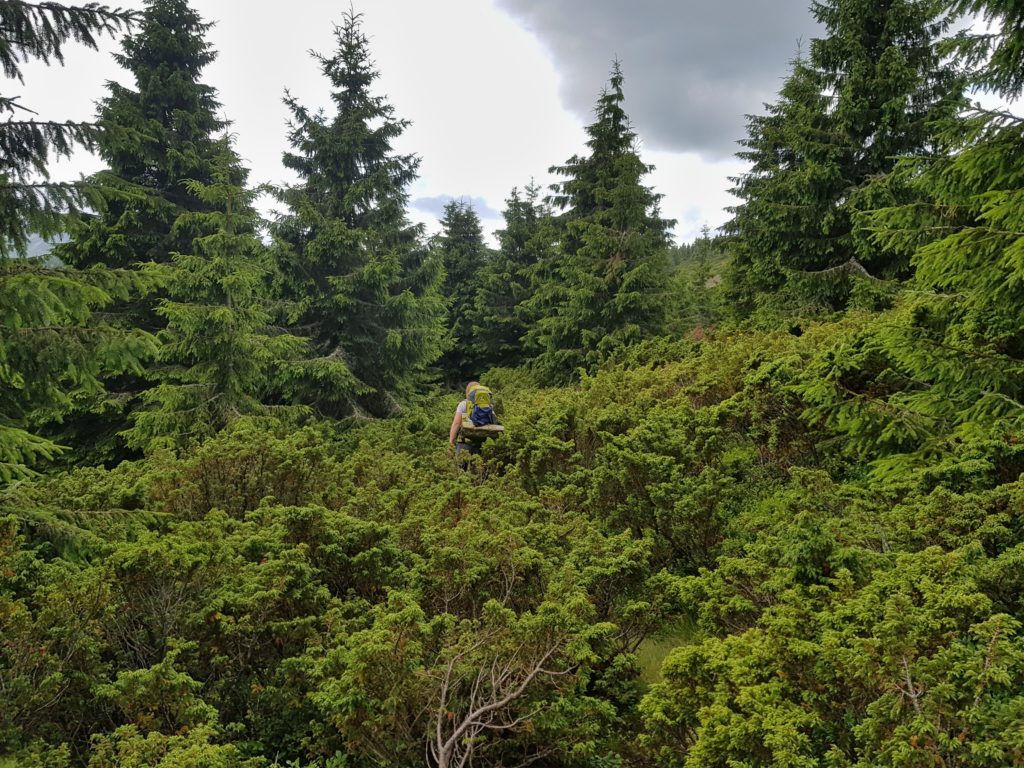
The walk to the pass of Joseph II. was wet. The narrow path went through junipers and mountain pines happy to give us water bearing on their needles. At several points we lost the way in the labyrinth of bushes. This reminded me of 2008 crossing of the range when we needed to crawl through the mountain pine.

From the pass the trail changed. It was well-marked as “Trail of Maria Theresa” and wide enough. We missed the highest peak in order to reach Lacul Iezer before night as we expected a tourist shelter – refugiu there. We met a first hiker of this week – a Romanian woman going around this C-shaped mountain range.

While passing by the meteorological station on Rețițiș peak (2021) we were told there is no refugiu near the lake and were offered an overnight there. We reluctantly accepted it on the promise of shower. The meteo-station was in a run-down stage. Roof was apparently leaking at some points. Cold water was running only at the bathroom and neither hot, nor drinking water was available from the taps. Nevertheless, we were able to use the cooker in the kitchen so we made enough hot water for a “shower” and making laundry. Though we had not expected it, this offer for 7 EUR /person included a dinner and a breakfast, which turned it into a good choice. I also learnt on the wall map, that what we considered tourist marking the day before were actually national park border signs.

Walking the bear area
We knew we need to go fast on Thursday 25th July to come as close to Borsec as possible because we got a parcel waiting for us at a post office there. The descent from Călimani was very mild and the landscape leading through abandoned poianas looked magic.
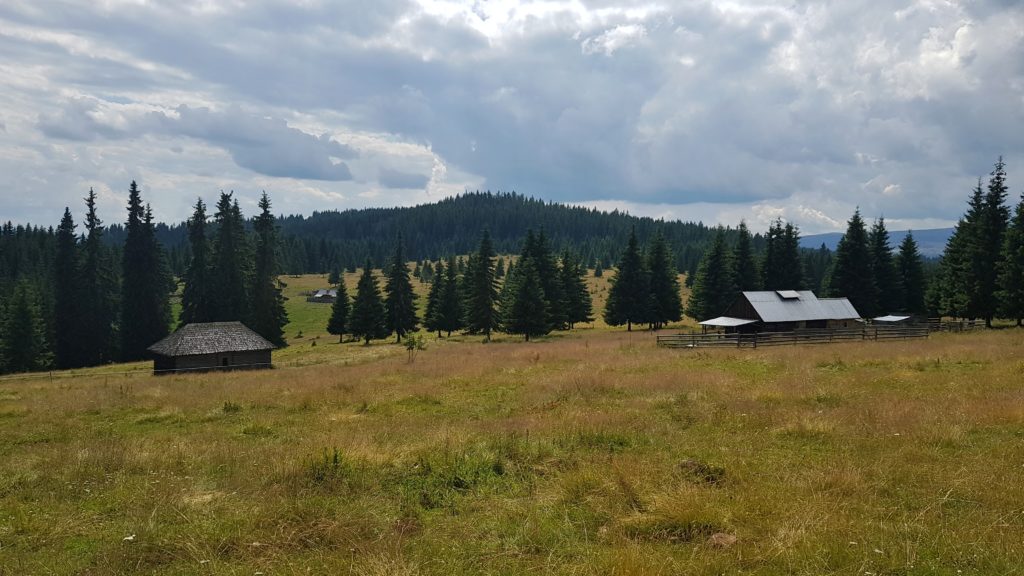
In the pass above Bilbor we decided not to follow the planned route through Bilbor village but rather follow the tourist marking that led to Răchițiş pass (950). Timewise it was not a good choice because the marking disappeared before the pass leaving us amid wet meadows of abandoned pastures. It was clear we are going through a bear country. Scat was frequent as well as destructed stumps and anthills along with moved stones made by bears trying to find insects for their menu. Several 2021 thru-hikers met with bears in this part of the trail.

The ascent from Răchițiş pass to refugiu under Nagy-Bükk peak (1308) was steep and painful. Notwithstanding we got almost no water and the water source below the refugiu was so low yielding it took long time to get enough of the most precious liquid. We reached the shelter at night but happy we are in a house right above Borsec.
Supplies from home
Refugiu was very comfortable so we got up quite late on Friday 26th July. Both from the refugiu and the tourist signs we realized we are in one of the parts of Romania with Hungarian inhabitants, historically they are called Székelys.
We reached Borsec – a spa town popular with tourists and famous for its mineral water –at around 10 am and made a luxury breakfast: tomatoes with fermented cream and cheese. Sitting on a bench near the gate to the promenade we turned into kind of a tourist attraction.

The real Borsec, where the post office is, spreads about one mile downhill from the spa town with crowds of tourists visiting shops and springs of mineral water. This was the smallest post office I have ever entered with customers’ space about 4 square meters, probably less. We took the parcel to a nearby bar, ordered capuccino (again Romanian style) and I started repacking => taking some stuff with us and dividing the rest to two parcels, one to Buşteni and one to Petroşani. The latter parcel contained only food as I thought I might not make it there.
This took about 1,5 hours of sorting out but the waitress was not objecting. Sending the parcels was a bit problematic as the clerk could not find Petroşani (Hunedoara county) in Romanian post office system. To use the civilization to maximum we went for a lunch to a restaurant. In the first one we ordered drinks and started choosing from the menu. While making orders waitress told us they actually serve only three meals today, all with pork, and send us to a restaurant across the street. The situation repeated there with only one meal on offer. One wonders why then the waiters go through the procedure of offering the menu list (and leaving foreigners translating what all the entries mean). The meal we received was not quite what we were told (beans), anyway. With our stomachs filled, we continued to the south making it up on a hill above Borsec. It was a bit frustrating seeing the place we stayed yesterday just across the valley but this was outweighted by the fact we were close to 4 BTS with data running fast so I used the opportunity to upload pictures from previous days to the cloud.
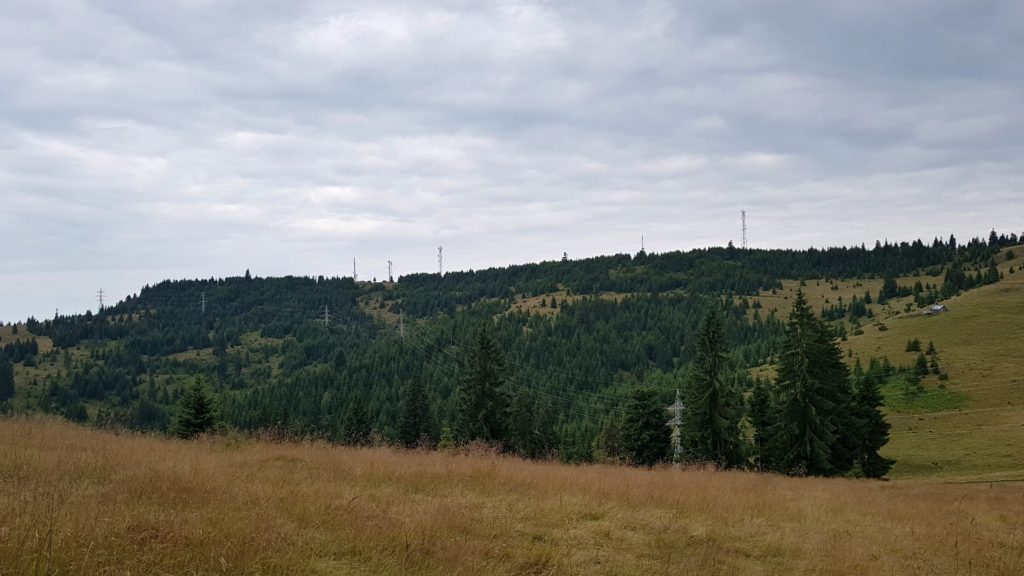
Muntii Giugului and Tatarului
We got up and started hiking early in the morning on Saturday 27th July. As Paja was about to leave on Monday and I wanted her to see Hăşmaş before that plus make an easy departure from Miercuriea Ciuc we needed to cover some distance. Our trail went mostly through forests and some meadows of Munții Giugului. At some parts of Carpathians the names of mountain ranges change with every ridge or a map. From my understanding both Giugului and Tătarului are part of Munții Bistriței.
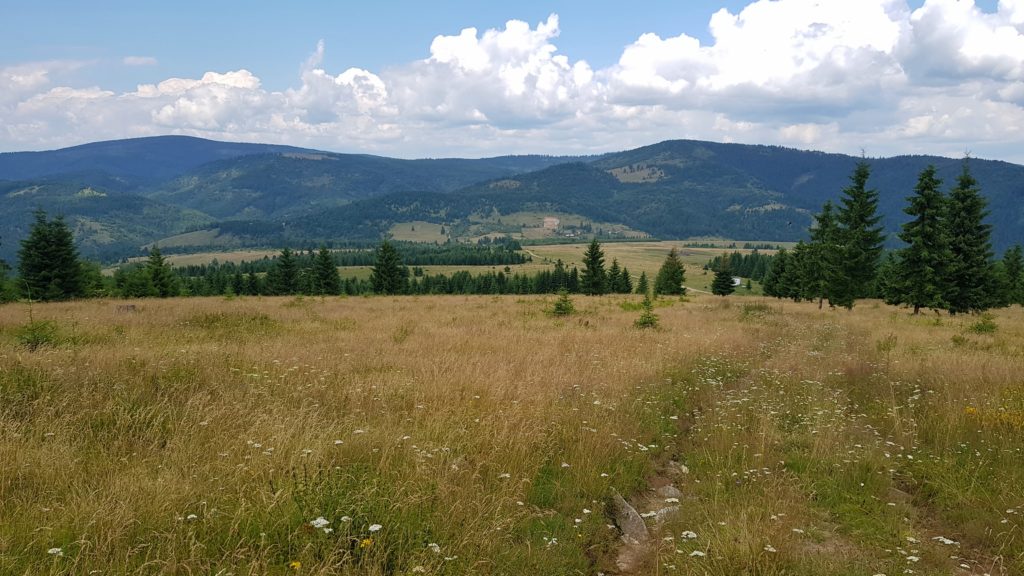
After short shower in the morning there was no rain for the whole day. We walked fast, but there were couple of factors slowing us down: abundant strawberries, raspberries, blueberries, puddles of water and trees fallen across the road. Fortunately there had been some motorcycle race on the part of the trail recently so it was easier to walk high grass. I would have never thought I could enjoy motorbike tracks in a forest. There were clear signs of bear presence and at one moment we could see really fresh footprints of a bear cub with mum while the noise in the dense spruce forest to our left told us we just narrowly missed an unwanted meeting.
Beautiful views on Ceăhlau with the main cliff to the right and Toaca (1904) to the left were opening to the north-east. I love this conglomerate island of north-east Carpathians, though I am missing it this time.
At about 6:30 pm we reached Pângăraţi pass (1250) where I expected some traders and fast food as it is close to the Bicaz gorge – the top tourist attraction of this part of Romania. There were some stands but apart from one they were already closed.
The only one did not offer anything we needed but the lady was so nice that she gave us her old bread. Searching for a place to stay overnight I was wondering what would we do with a kilo of bread. Voilá, let us make fried bread for the dinner. We did and it was so successful we repeated this in the days to come. We also successfully tested shelter made from Gatewood Cape and one US Army poncho.

Picturesque Hăşmaş
The morning on Sunday 28th July was a bit noisy as a truck full of blueberry pickers parked near out tarp at 6:30 am. After making the breakfast (fried bread), we set up to see the Hăşmaş mountains. After few kilometers we found a spring with a trough and used it to wash my trousers and a shirt.
Hăşmaş is formed by limestone and its scenery is way more picturesque then previous ranges. The main ridge south from Hăşmaşu mare (1792) is falling by rock cliffs to the west, which is beautiful. We met about 25 one-day hikers as it was Sunday but not a single person on a multi-day hike.
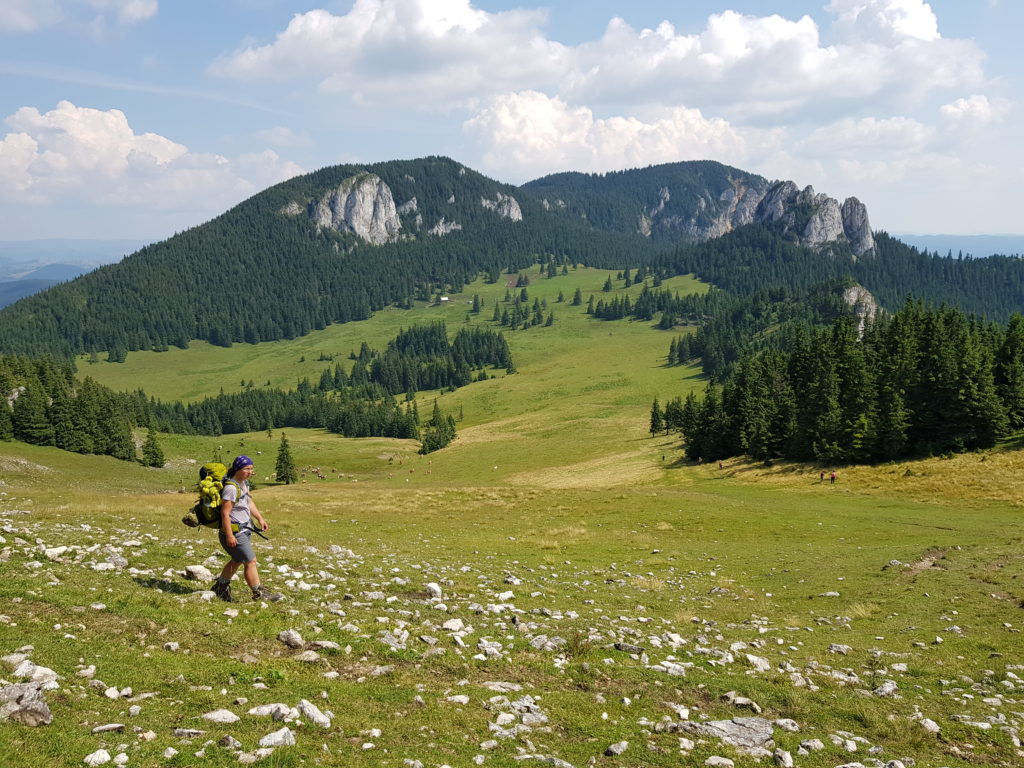
In the evening we came to beautiful Ciucului mountains. Small forests, pastures and hay meadows made wonderland scenery. The only trouble were dog attacks that repeated whenever we came closer to a shepherds’ house or a herd.
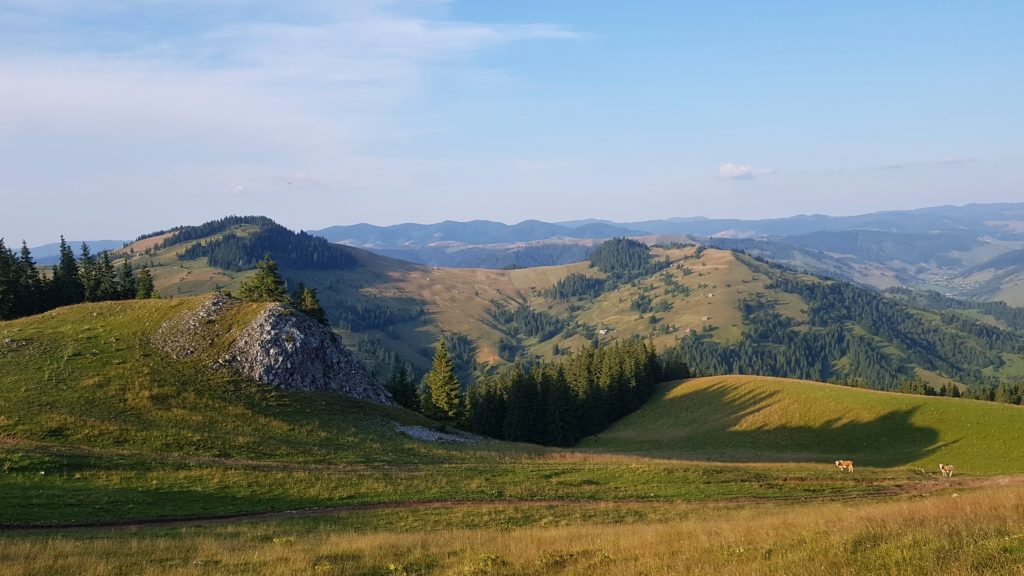
We went late to night in order to reach refugiu under Noşcolat peak (1553). When we came there it appeared it is in the middle of a ranch with wild dogs. Fortunately a 14 years old son of the shepherd took care about our safety with his whip accompanying us to water spring and even giving us some cheese.
It was a windy place so while turning off the fan of my woodstove, the flames reached it through the tube and the plastic fan burnt. I made it working again, though with less power getting a valuable lesson for future construction designs. The spare part was hopefully waiting for me in Buşteni.

